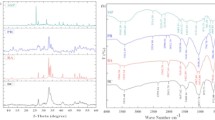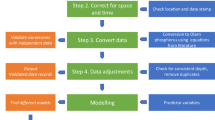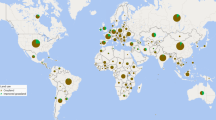Abstract
Bouldin and Sample1 considered that the dissolution of dicalcium phosphate in soil was a diffusion-controlled process, and consequently the rate of dissolution would depend on the surface area of the particular sample. Since diffusion is a slow process, granules of dicalcium phosphate may remain in soil for a considerable period after application. Thus these workers observed on numerous occasions that granules of dicalcium phosphate did not dissolve completely after 3–6 months in cropped soil.
This is a preview of subscription content, access via your institution
Access options
Subscribe to this journal
Receive 51 print issues and online access
$199.00 per year
only $3.90 per issue
Buy this article
- Purchase on SpringerLink
- Instant access to full article PDF
Prices may be subject to local taxes which are calculated during checkout
Similar content being viewed by others
References
Bouldin, D. E., and Sample, E. C., Soil Sci. Soc. Amer. Proc., 23, 276 (1959).
Author information
Authors and Affiliations
Rights and permissions
About this article
Cite this article
LARSEN, S., GUNARY, D. & DEVINE, J. Stability of Granular Dicalcium Phosphate Dihydrate in Soil. Nature 204, 1114 (1964). https://doi.org/10.1038/2041114a0
Published:
Issue date:
DOI: https://doi.org/10.1038/2041114a0



